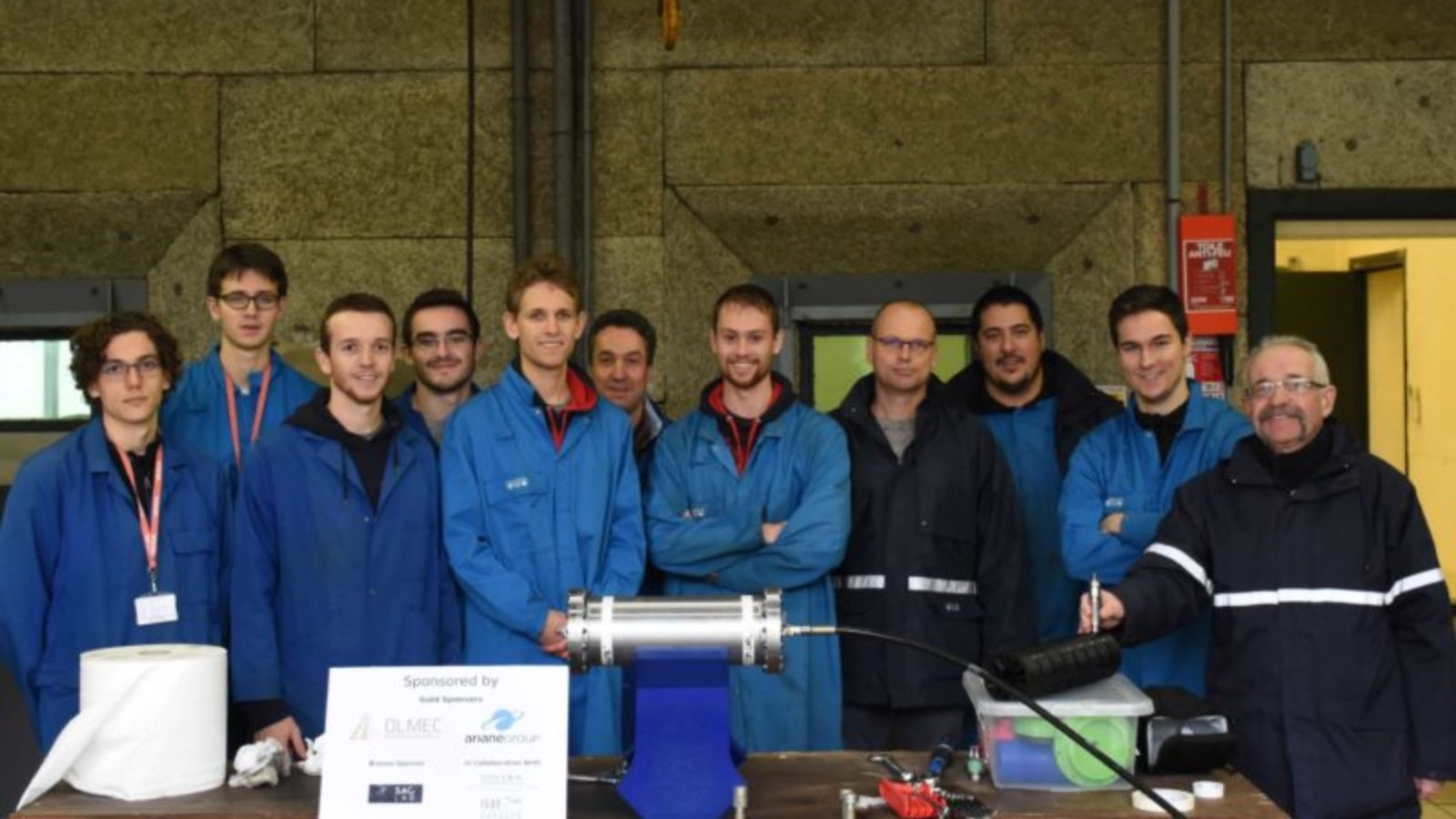
Rotate your tablet
for a better experience


Rotate your tablet
for a better experience

ArianeGroup incubates many student projects, one of which is a partnership with French aerospace engineering institute ISAE-SUPAERO to fly a particularly innovative engine demonstrator.
Eric Brunner and Emilien Mingard are both studying for a Master’s degree in aerospace engineering at ISAE-SUPAERO and are members of the SCube student club.
Eric Brunner: The Griffon rocket engine concept began at ISAE-SUPAERO in 2018. Griffon is designed for a two-meter single-stage experimental rocket developed by SCube, our student club at ISAE-SUPAERO. Today, Griffon is ready for testing. We have fully integrated the engine and are waiting for a slot to carry out the test.
Eric Brunner: Griffon is a hybrid/solid fuel demonstrator. It’s original because it is fuelled by ABS plastic which is commonly used in 3D printers. The plastic is burnt in the combustion chamber with highly concentrated liquid nitrogen peroxide as oxidizer.
Eric Brunner: The Supaero Space Section, or SCube, is a student organization at ISAE-SUPAERO. We are not just crazy about rockets, but are also keen to tackle a complex technical challenge and put the engineering theories we learn into practice. The club supports projects like Griffon, by providing facilities, contacts, and funding.
Emilien Mingard: Working on Griffon calls for more in-depth understanding than we are taught in our courses – that gives us a good basis but we to take it further and build our own tools. The ideal Griffon student wants to learn more and challenge themselves, and they need to be willing to commit lots of time to the project.
Emilien Mingard: Due to COVID-19, some students had to leave France early March. The students who have now resumed the project are finishing preparing the engine and hope to test it by the end of the year.
Eric Brunner: The first step will be to fire the Griffon demonstrator several times. The students will learn a lot from this unique experience and be able to use their knowledge to integrate Griffon into a small experimental launch vehicle called AEther. After that, there will still be plenty of challenges, like finding a launch site and operating the launcher, but that’s why the project is so exciting!
Emilien Mingard: Go for it! If you’re a space enthusiast, nothing beats making something yourself. Space is a unique field of engineering with very long timelines, and bringing something of your own is not easy. To find a job in this highly competitive sector, if you can demonstrate hands-on project experience when applying to company, that’s a real asset.
Emilien Mingard: We built this engine completely by ourselves. Thanks to this experience, we have gained knowledge and expertise in a whole bunch of areas: fund-raising (negotiation), business partnerships (cooperation and ability to listen), project reviews with experts and professionals (ability to synthesize and be persuasive), scientific and technical research, design, analysis, manufacturing and testing, etc. Everything the perfect engineer needs!